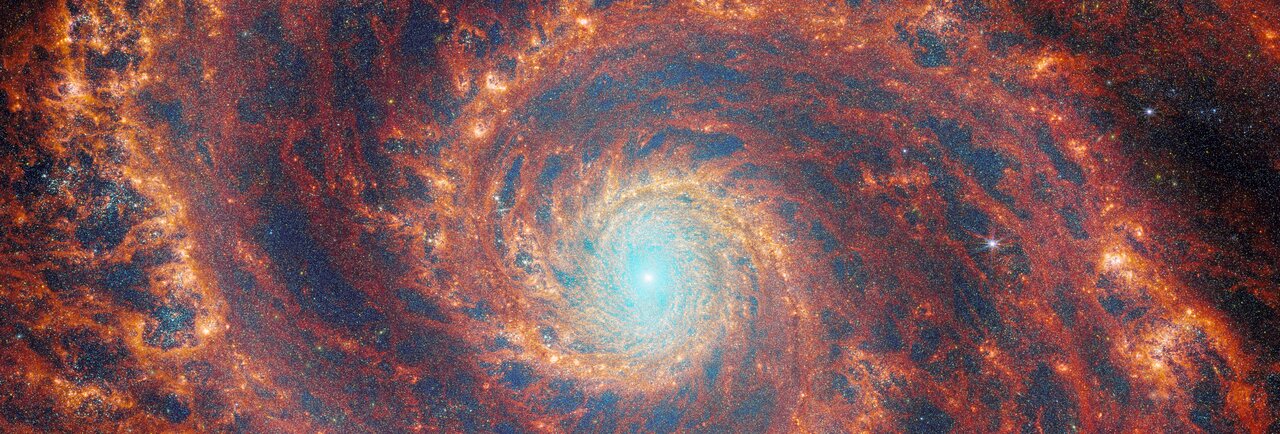The JWST has surprised astronomers again. Contrary to our existing understanding, the JWST showed us that the early Universe was full of fully-formed galaxies similar to the ones we see today. The widely-held belief is that the early Universe was too chaotic in its early years, and frequent mergers would’ve disrupted galaxies’ graceful shapes.
Galaxy morphologies are important clues to their history. Understanding how their structure and morphology change over time is critical to understanding them. Astronomers only figured out that there were spiral galaxies in the 1840s when the Earl of Rosse built his gigantic telescope called the Leviathan of Parsonstown. He discovered the spiral nature of some galaxies, which he thought were nebulae at the time. Using his massive telescope, he was the first to discover the Whirlpool Galaxy’s (M51) spiral shape.
As astronomers learned more about galaxies, they classified them into shapes. In 1926, Edwin Hubble published the Hubble Sequence, a way of classifying galaxies. It divides galaxies into three classes: ellipticals, lenticulars, and spirals.

We’re all aware of the different shapes galaxies can take now.
Since the Hubble Space Telescope was launched, it’s looked at faint distant galaxies and shown that they have peculiar and irregular shapes. Few of these distant, ancient galaxies looked like anything on the Hubble Sequence. Over time, astronomers understood that galaxies grew through mergers, and these mergers disrupted galaxies as they evolved, preventing many of them from forming into the majestic spirals we see today.
“For over 30 years it was thought that these disk galaxies were rare in the early Universe due to the common violent encounters that galaxies undergo.”
Leonardo Ferreira, lead author, Department of Physics & Astronomy, University of Victoria
The JWST was launched with a variety of science objectives in mind, and one of them was studying the early Universe, including the first galaxies. It has the infrared horsepower to look back further and more clearly than the Hubble can. When it did, it upended our existing understanding.
The new observations are presented in a paper in The Astrophysical Journal titled “The JWST Hubble Sequence: The Rest-frame Optical Evolution of Galaxy Structure at 1.5 < z < 6.5.” The lead author is Leonardo Ferreira from the Department of Physics & Astronomy at the University of Victoria, also affiliated with the Centre for Astronomy and Particle Theory at the University of Nottingham.
“For over 30 years it was thought that these disk galaxies were rare in the early Universe due to the common violent encounters that galaxies undergo,” Ferreira said. “The fact that JWST finds so many is another sign of the power of this instrument and that the structures of galaxies form earlier in the Universe, much earlier in fact than anyone had anticipated.”
There’s a clear and pronounced difference between HST and JWST observations. While the HST was able to observe some distant ancient galaxies, the JWST revealed the morphologies of more high-redshift galaxies for the first time.

It’s difficult to overstate the significance of these results. They overturn our entire understanding of how galaxies formed and evolved. Prior to these observations, astronomers thought evolved disk galaxies didn’t appear until around 6 billion years after the Big Bang.
“Using the Hubble Space Telescope we thought that disk galaxies were almost non-existent until the Universe was about six billion years old, these new JWST results push the time these Milky Way-like galaxies form to almost the beginning of the Universe,” said study co-author Christopher Conselice, Professor of Extragalactic Astronomy at The University of Manchester.
This work is the largest sample yet of visually classified galaxies observed with the JWST. It’s about 20 times larger than previous studies, and a larger sample means that astronomers can examine in detail how galaxy structure has changed over this critical epoch. One of the main reasons for examining galaxy morphology is to figure out how and when the Hubble Sequence emerges. It shows that the Hubble Sequence was already in effect as early as one billion years after the Big Bang.
Before the JWST began its observations, simulations and observations with less powerful telescopes showed that galaxies grow and evolve through hierarchical mergers in the Universe’s early times. High redshift observations were more challenging prior to the JWST, but research showed an increase in the number of peculiar galaxies the further back astronomers looked.
But that might all be discarded now and added to astronomy’s history of getting things wrong before getting things right.
“Based on our results astronomers must rethink our understanding of the formation of the first galaxies and how galaxy evolution occurred over the past 10 billion years,” Conselice added.

